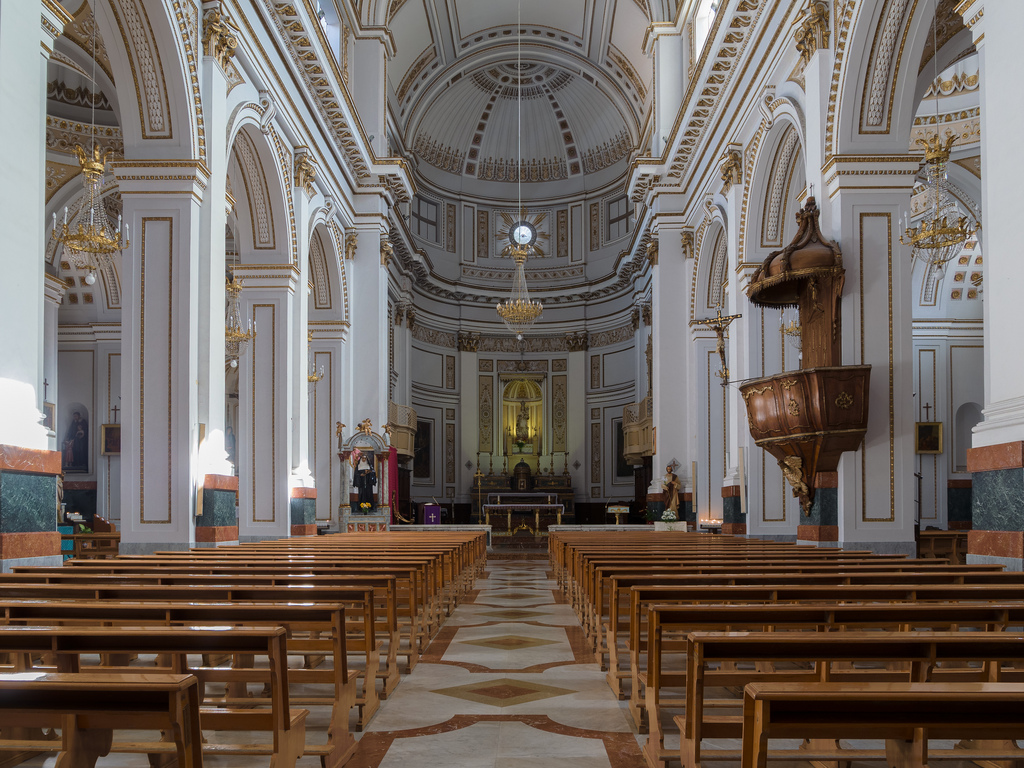What is there to visit?
Guide to your stay in Sciacca

Basilica of the Madonna of Concorso
The church was founded in 1100 by the Countess Giulietta Normanna and was dedicated to Santa Maria Maddalena chosen as the patron saint of the city. It was rebuilt in 1630 by abbot Michele Blasco, a fruitful painter and architect, but was finished in rustic appearance only in 1686. It remained in this state for 143 years until 1829 when it was completed.
Starting with the exterior of the church, the fore court is enclosed with a beautiful railing of columns and pillars. On the main facade there are three large doors- above the doors there are three white marble statues made by Gagini. Above the central door is Santa Maria Maddalena, on the left, Saint Peter and on the right Saint Paul. In the upper part of the façade there are two columns with a beautiful window of stained glass in the center that filters the light and diffuses a mystical atmosphere. On the left side we see a beautiful bell tower which is missing the right side giving the façade an asymmetrical architecture. On the façade of the right aisle, which comes up from Corso Vittorio Emanuele, there are two staircases with a large door in the middle on which there is the statue of San Calogero. On the facade of the left aisle that exits onto Vicolo Duomo, we notice a great door on which the statue of Saint John the Baptist is found. On the back of the church you can see three semi-cylindrical apses that are the remains of the old church.
Inside, the church is divided into three aisles 22 meters wide and 34 meters long that are separated by two rows of pillars. The central vault is dominated by the frescoes by Tommaso Rossi depicting the celestial glory of chapter 4 of the apocalypse. In the 10 side panels, 5 on each side, episodes of the life of Saint Mary Magdalene are depicted. On the two sides of the central fresco there are two large paintings, the one near the entrance represents the glory of the Blessed Mary, the other the ascension of Jesus to heaven. Starting from the left aisle: in the first chapel there is a baptismal font from 1500 by Gagini, behind it we find a relief with the decapitation of Saint John the Baptist. Above is the picture depicting the baptism of Jesus. In the central apse stands the Madonna of the Soccorso, who since 1626 has been the patron saint of the city, done by the famous sculpture Birritaru edel Mancino. On the sides there are two paintings: the one on the right with the crucifixion of Saint Peter, and on the left the two sacred families. Continuing to the right of the altar is a marble tabernacle from 1580 by Gagini. In the first chapel we find a marble statue of the Madonna of the Chains from 1500. In the second chapel we find the wooden statue of Saint Calogero. In the third chapel there is a plaster statue of Saint Joseph and in the fourth is the sepulcher of Bartolomeo Tagliavia made by Gagini. Some refined bas-reliefs adorn the sarcophagus.